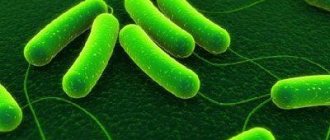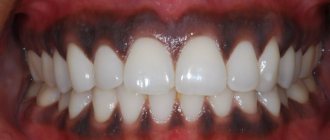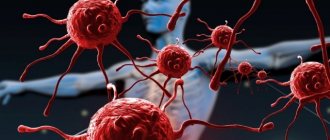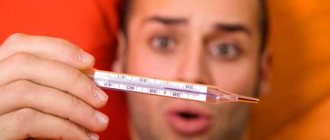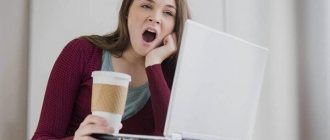The appearance of a symptom such as colorless stool is often a warning sign. White feces can appear both with serious liver damage and for more harmless reasons, but this sign cannot be ignored.
If colorless stool is observed constantly, you should immediately consult a doctor and undergo an examination. A single appearance of this symptom usually indicates a malfunction, but not a dangerous disease.
Normal stool
Anyone can submit a stool test to the laboratory. But deciphering the meaning of the analysis is not an easy task. But any experienced doctor can help with this. Let's see what the patient's stool norm looks like through the eyes of a specialist:
- Quantity per day. For an adult – 100–250 grams, for small children – from 30–50 grams.
- Consistency. In adults - formed discharge, in children - viscous, mushy.
- Weight, contents. It must be free of impurities, bloody discharge, and mucus.
- Smell. Fecal, not sharp. In children, the odor is sour; in bottle-fed infants, it is putrid.
- The color is brown in adults; in children, not too light yellow or yellow feces are allowed. Discolored feces indicate problems with the body.
- The enzyme responsible for turning stool brown is stercobilin. It is formed on the basis of bilirubin, which is produced in the liver.
- pH level indicator. In children - 4.8. In adults – more than 7.
- Ammonia. It appears only in older children and adults.
- Neutral fat, fatty acids and muscle fibers are present only in the feces of babies.
- Leukocytes are single.
If you change one of the parameters, you should consult a doctor. Perhaps the cause of stool discoloration, dark or other uncharacteristic shade, is food, medications, poor lifestyle or illness:
- Black. Indicates bleeding of the gastrointestinal tract, consumption of berries - currants, blueberries, taking drugs Bisal, Vikalin, Activated carbon.
- Red. It is observed in ulcerative lesions and lesions of the duodenum, after eating beets and tomato juice.
- Dark brown. Signs: constipation, colitis. Increased consumption of protein foods.
Let's look at some more features of the color change in the product of defecation. And why is some people's stool light and others' stool dark?
A change in stool color is a reason to consult a specialist.
Medicines
Medications also affect the color of stool. This is due to the fact that some of them negatively affect the condition of the liver, gradually destroying it. There are several groups of medications, the use of which can cause the appearance of colorless stool:
- non-steroidal anti-inflammatory drugs;
- antifungal;
- antibiotics;
- drugs for tuberculosis, gout and epilepsy;
- oral contraceptives;
- paracetamol, aspirin (preparations containing acetylsalicylic acid), etc.
If the stool becomes discolored while taking drugs from these groups, you should definitely consult a doctor to check the condition of the liver and, if necessary, begin its treatment in a timely manner. Especially if the medication is stopped and the normal color of the stool does not return.
Yellow stool in an adult
What becomes the main reason for changes in the color of a person’s discharge and what should you pay attention to if light-colored feces appear periodically? There are several shades that need to be remembered.
Yellow color of stool. It is usually combined with symptoms such as flatulence, diarrhea, and abdominal pain. In this case, it is worth thinking about the liver. The causes may be disorders of the biliary system, ducts, or food products of the same color. Light yellow stool in an adult, orange tones. Causes: parasites, digestive disorders, tumors in the pancreas, inflammation of the bile ducts. Associated symptoms: flatulence, pain and heaviness in the abdomen, diarrhea, enlarged liver.
What if the stool has an unpleasant odor?
Light-colored stool may have a characteristic foul odor and runny consistency. If you experience frequent bowel movements with similar symptoms, this indicates a problem in its functioning.
This happens in the process of slow digestion of fats, which causes the appearance of gallstones or the development of oncology.
Clarified feces with an unpleasant odor are released in chronic pancreatitis and pancreatic cancer. Then treatment must be carried out in a timely manner, because these pathologies pose a danger to life.
Light-colored stool: causes and symptoms in an adult
What happens in the body and why unusual white stool appears. If symptoms such as weakness, nausea, bloating, light-colored stool and dark urine appear, an accurate diagnosis of the health condition is needed. These signs indicate serious, often chronic and dangerous diseases:
- jaundice. Bilirubin, which is produced by the liver, enters the blood and stains the skin, giving the surface of the epidermis a yellowish tint. And in fecal secretions there is a deficiency of this enzyme, the stool is light;
- pancreatitis. Serious inflammation of the pancreas, in which enzymes and toxins enter the bloodstream and affect organs;
- cholecystitis. Impaired bile outflow and formation of cholelithiasis;
- oncological neoplasms of the gastrointestinal tract.
With unusual stool and unpleasant symptoms, the inflammatory process may progress.
If there are no symptoms of the disease or signs of an inflammatory process, then light-colored feces in an adult have common everyday causes:
- taking medications;
- fatty protein foods;
- wrong diet;
- hormonal contraceptives.
Here you need to carefully monitor your diet and its balance. Do not take medications on your own without a doctor’s prescription. If white stool appears, but after a few days it returns to normal, it’s time to stop taking the pills and think about a healthy diet.
Nutrition
However, when you see colorless stool, you should not immediately start to panic. Its appearance can be caused by various reasons, some of them completely harmless. For example, having come to the village to relax in the summer, everyone unanimously attacked the fat cottage cheese, sour cream, and cream. And also homemade butter and lard... And now there’s a deviation from the norm. Therefore, if you notice changes, you should think about your diet and observe changes in stool color for several days. If you change your food, everything will return to normal in a couple of days.
White stool in a child
For babies during the period of natural breastfeeding, as well as mixed feeding, a white discolored type of anal discharge and signs of too light stool are the norm in the absence of significant symptoms of a painful condition. Causes:
- Teething.
- Breast milk.
- Feeding with artificial formulas.
- A large amount of sweets in the diet.
In young children, the color of stool may change depending on the food: red from beets, orange from carrots. If a nursing mother has eaten a lot of meat, the color of her bowel movements may also change.
White stool is normal for an infant.
Inflammatory liver diseases
Has your stool become discolored and your urine dark? Most likely, these are symptoms of hepatitis - a dangerous viral disease.
Depending on the type of virus, hepatitis A, B and C are distinguished. In recent years, other types of the virus have been identified.
Lightening of stool is observed with any type of viral hepatitis. Hepatitis A can be contracted through water and food. Hepatitis B is transmitted only through blood.
Its most dangerous complication is cirrhosis of the liver, which develops in 10% of patients. Hepatitis C proceeds in the same way as the previous form, but is much easier to tolerate.
The Delta form of hepatitis is the most dangerous and appears only simultaneously with form B. Due to the doubled viral load, the liver quickly fails.
With any type of viral hepatitis, three typical signs are observed:
- discolored feces;
- dark urine;
- yellowing of the skin, mucous membranes and eyeballs.
With viral hepatitis, viruses that cause the disease are found in feces. The feces not only become discolored, but also acquire a characteristic odor, which is an additional symptom.
Chronic viral hepatitis is dangerous because it may not show pronounced symptoms, such as high fever, abdominal pain or loose stools, for years.
Video:
Defecation with discolored feces is often the first, and sometimes the only signal that makes you suspect liver inflammation and start treatment on time. Timely measures taken will help avoid cirrhosis and sometimes cancer.
Not all liver inflammations are viral in nature. Sometimes parasites settle in the organ, leading to tissue inflammation: echinococci, lamblia, fluke worms.
Parasites destroy tissue mechanically or chemically, which leads to hepatitis, the first symptom of which is discoloration of stool.
So, discoloration of stool can be a symptom of diseases of the liver, pancreas or gall bladder.
If the tests do not reveal any pathologies, then you just need to change your diet, and the color of the stool will be restored.
Source: protrakt.ru
Greenish stool
Why might light green stool appear? What is the reason for this and should I be wary of such symptoms? If we talk about infants, then such a swampy shade of discharge is the norm. And there's nothing wrong with that. Olive-colored bowel movements in an adult are signs of:
- Dysentery. An infection that occurs due to damage to the intestines by bacteria. Signs: rumbling in the stomach, migraines, stool with blood, mucus and pus.
- Dysbacteriosis. Disturbance of the natural intestinal microflora. Characterized by bloating and diarrhea.
- Internal bleeding in the gastrointestinal tract, ulcerative lesions.
- Salmonellosis. A disease caused by the bacterium Salmonella. Symptoms: nausea, loose stools, fever, rash.
- Diabetes. Metabolic disorders, damage to blood vessels and tissues.
- Food poisoning.
- Problems with the thyroid gland.
- Uncontrolled use of antibiotics.
These disorders can provoke accompanying symptoms such as fever, weakness, severe acute pain in the stomach, and decreased hemoglobin. Arrhythmia, pale skin color, and rapid breathing often occur.
For an adult, this color signals intestinal infections.
Diseases of the digestive organs
A common cause of discolored stool is inflammation of the pancreas (pancreatitis).
Feces with pancreatitis are liquid, mushy, they contain a large amount of unprocessed fats, since the body does not have enough enzymes to process them.
The color of stool can be described as pearlescent or dirty gray. Simultaneously with the change in the color of the stool, the temperature rises, pain in the hypochondrium, dizziness, and vomiting begin.
The pain may be tingling in nature. Taking painkillers does not improve the condition.
Acute pancreatitis is a serious illness with the possibility of death. The chronic form is less severe.
Feces in chronic pancreatitis have a characteristic odor and gray color and are difficult to flush down the toilet. A dull pain appears in the hypochondrium, and the temperature may rise.
Another reason why stool may become discolored is cholecystitis. This is the name for inflammation of the gallbladder, an organ in which bile produced in the liver accumulates before being released into the intestines.
With cholecystitis, a large amount of fat and nitrogenous products are found in the stool, leading to a change in its color to light, sometimes whitish.
- stool discoloration;
- pain in the right hypochondrium that occurs after eating spicy or fatty foods or drinking alcohol;
- constant nausea;
- bitter or metallic taste in the mouth;
- irritability, insomnia;
- white coating on the tongue, dry mouth.
Cholecystitis can occur in acute and chronic forms - the color of stool changes in both cases. In case of acute cholecystitis, the patient needs urgent surgery. The chronic form is treated conservatively: with medications and diet.
Tests to determine the causes of changes in stool color
To identify disorders in the digestive system and organs of the gastrointestinal tract, the following types of tests are prescribed, which are also associated with a complete study of stool:
- blood chemistry. Search for discrepancies in the number of leukocytes and hemoglobin;
- coagulogram. Study of blood clotting rate;
- coprogram. Examination for hidden blood, mucus and pus in bowel movements;
- analysis for worms. Methods used: enzyme immunoassay, CPR;
- colonoscopy. Examination of the colon with the subsequent possibility of further biopsy and collection of cellular material;
- CT, MRI, ultrasound examination. Visual examination of internal organ lesions that cause discoloration of stool.
The results obtained will help the doctor make the correct diagnosis and find the causes of light-colored stool in a person. Treatment must be carried out under the supervision of a specialist. Taking medications and restorative therapy are mandatory.
Symptoms
Having determined what may cause light-colored stools, it is important to know the accompanying symptoms that indicate certain signs of the disease.
White, beige, or discolored stool causes the following general symptoms:
- elevated temperature;
- digestive disorders;
- pain in the abdomen, which is most often observed in the right side;
- yellowing of the whites of the eyes or skin;
- decreased appetite;
- nausea or vomiting;
- general malaise;
- weakness;
- the shade of urine becomes dark;
- Liquid stool may be observed. Diarrhea may continue for a long time;
- mucus inclusions in stool or white spots;
- weight loss;
- flatulence;
- brown feces with white spots indicate the presence of parasites in the body;
- pain in the left side;
- intolerance to many foods;
- lumps or fibrous tissue in feces;
- repulsive odor of discharge;
- muscle pain;
- strong heartbeat;
- increased thirst;
- bleeding gums.
Another article on this topic: How to use Cisapride? Indications for use, analogues, cost
Treatment
If a person’s stool has lightened or become discolored for the first time, and the patient does not experience pain or discomfort, we can talk about eating fatty foods. Quite often, after strong alcoholic drinks and beer, a pale tint of feces can also be observed. As soon as the body self-cleanses from alcohol poisoning, uncolored feces will acquire its normal shade.
If the diarrhea is not associated with poisoning, the patient is prescribed drugs such as Stopdiar or Smecta. The patient should also follow the following recommendations:
- follow a diet during treatment;
- maintain bed rest;
- drink plenty of liquid or mineral water;
- exclude fatty, fried or spicy foods.
If the appearance of light brown or whitish stool is associated with infection and the presence of pathogenic microflora, a course of antibacterial drugs is prescribed:
- Claforan;
- Cefotaxime;
- Doxycycline;
- Monomycin;
- Gentamicin.
When cholecystitis is diagnosed, No-Shpa or Spazmolgon is prescribed for spasms. Taking choleretic drugs is also important:
- Holosas;
- Chophytol;
- Allohol;
- Holenzim.
For dysbacteriosis, the following drugs are indicated for the patient:
- Linux;
- Bifidumbacterin;
- Hilak-Forte.
White mucus in stool
If a person has light beige or sand-colored feces interspersed with mucus, they most often speak of dietary errors. Very often, the appearance of mucus is associated with the consumption of large amounts of fermented milk products, bananas, melon or watermelon. If there is a lot of mucus, the patient is diagnosed with an increase in pathogenic microorganisms in the gastrointestinal tract.
Yellow-pale feces with mucous patches may also indicate:
- for food poisoning;
- for the presence of polyps in the intestines;
- for irritable bowel syndrome;
- if a person is allergic to certain types of food;
- for the presence of malignant formations in the gastrointestinal tract;
- The appearance of mucus may indicate diverticulitis or mucoviscytosis.

